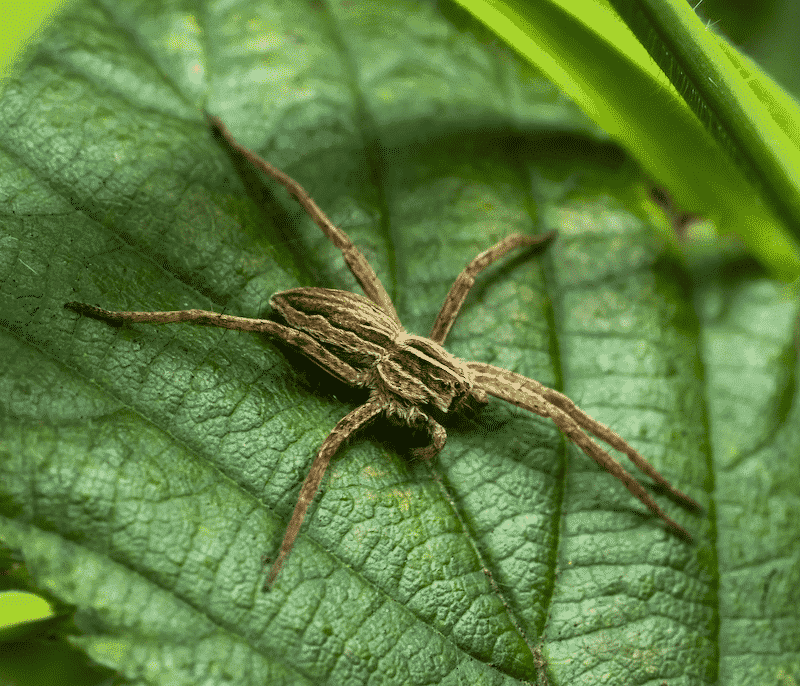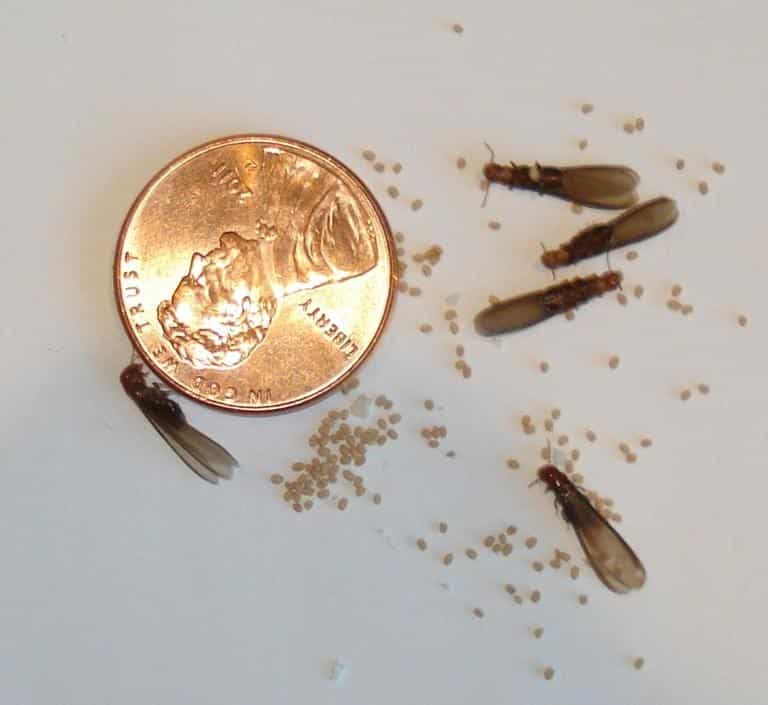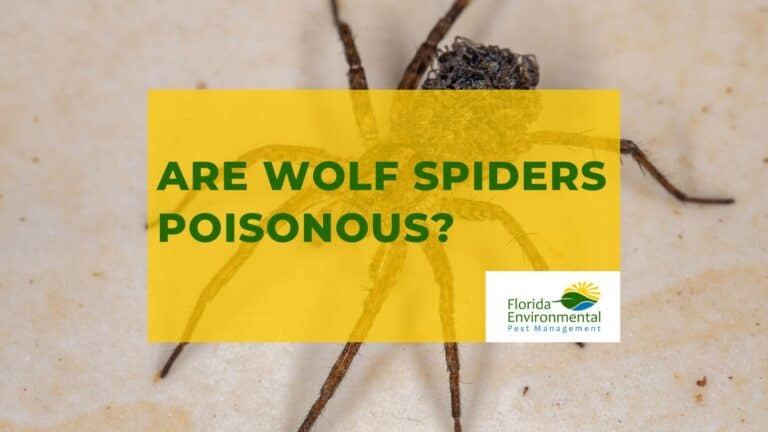Wolf Spider Information
Appearance:
Wolf spiders can grow to be pretty large, anywhere from ¼” long to 1 ½” long, and may have a leg span of about 3” long. They are dark brown or black in color. They also have the ability to carry their own egg sacs around, on their abdomens, and can carry their young spiderlings, after hatching, too.

Location and Behavior Patterns:
Wolf Spiders tend to stay outdoors, and they typically are located at ground level. They may hide underneath bushes, flowers, within shrubs, or underneath stones. It is rare that a Wolf Spider will make its’ way indoors, but if it does, it probably entered the building through a construction crack or an open door. Infestations of Wolf Spiders are very rare, within the interior of a home or a business property.
Wolf spiders do not spin webs. They feed on other insects, and they can appear quite aggressive in their hunting behavior. They seem to jump, or pounce, on their unsuspecting prey.
Eye Sight
Wolf spiders have excellent vision, which is necessary for their hunting activity. They have eight eyes positioned in three rows, the central row housing the biggest eyes. While the smaller eyes in the other two rows can detect movement from any direction, the giant eyes can sense both light and dark.
Wolf spiders have an eye shape that gives them 360-degree vision, allowing them to spot possible prey from any angle. Wolf spiders are aggressive hunters who pursue their prey rather than depending on webs to catch it. Hence, this is very crucial for them.
Habitat
Wolf spiders may be found worldwide in various environments, such as farms, woodlands, deserts, and suburban areas. They are adaptable and can grow in different conditions, including hot and dry, chilly and damp.
Wolf spiders are ground-dwelling insects frequently discovered in leaf litter, under rocks, or in caves. Some may be found in trees and bushes since they can climb walls and other surfaces.
Legs
Wolf spiders have eight legs, which aids in their active hunting habit. Wolf spiders can pursue their prey at great speed because of their powerful, nimble legs. The spider’s legs are composed of numerous segments coated in tiny hairs to aid movement and surface cling. They have very flexible legs that can bend in several ways, enabling them to travel in whatever direction they need to get their prey.
Wolf spiders are among the fastest spiders in the world, thanks to their swift movement and ability to run at speeds of up to one meter per second. Their legs are not only meant for hunting but also for mating and rearing their young. Wolf spider females travel with their egg sacs, and when the eggs hatch, the spiderlings emerge from the sacs.
Control Methods
There are several techniques you may use to control wolf spider populations if you have an infestation in your home:
- Remove hiding spots: Wolf spiders like dark, damp areas to hide, such as beneath rocks, in leaf litter, and in burrows. You may limit the number of wolf spiders in the region by eliminating these hiding spots from your yard or house.
- Cover cracks and gaps: Wolf spiders may enter homes through minor cracks and gaps in the foundation and walls. Sealing these holes might help keep them out of your house.
- Use natural repellents: Scents like vinegar, cinnamon, and lemon help repel wolf spiders and keep them away from your house. You may sprinkle these scents around your property or use them as a spray to create a barrier that will keep spiders out.
Note that wolf spiders benefit the ecology and are not toxic to humans. They may seem frightening, yet all they want is food and shelter. Using the above management tactics, you may minimize the number of wolf spiders in your house while still allowing them to fulfill their part in the environment.
Treatment:
Wolf spiders are rarely harmful to humans, but they can be worrisome to property owners. If indoors, then sticky pads, or traps, are the most effective way to treat this type of spider. If an infestation has occurred outdoors, then a pest professional can treat the affected area for you, as well as show you preventative measures to take, in order to limit their presence.
Frequently Asked Questions About Wolf Spiders
Are Wolf Spiders Harmful To Man?
Wolf spiders are not harmful to humans and do not endanger our health. Their bites are painful but not venomous and will not cause serious injury.
What Do Wolf Spiders Eat?
Wolf spiders are strong predators who consume a wide range of food, including insects, spiders, and small animals. They are most active at night and prefer to pursue their prey rather than rely on webs to trap it.
How Fast Can Wolf Spiders Run?
Wolf spiders are extremely quick, reaching speeds of up to one meter per second. This, paired with their keen eyesight, makes them exceptionally adept hunters in their respective habitats.
How Do I Tell If There Is A Wolf Spider In My Home?
You may identify wolf spiders by their brown, gray, or black color and unique eye arrangement pattern, including four small eyes on the top row and two bigger eyes on the bottom row. Also, you will often find them hiding in dark, damp locations such as beneath rocks, leaf litter, and burrows.
How Long Do Wolf Spiders Live For?
Typically wolf spiders live for one to two years.










